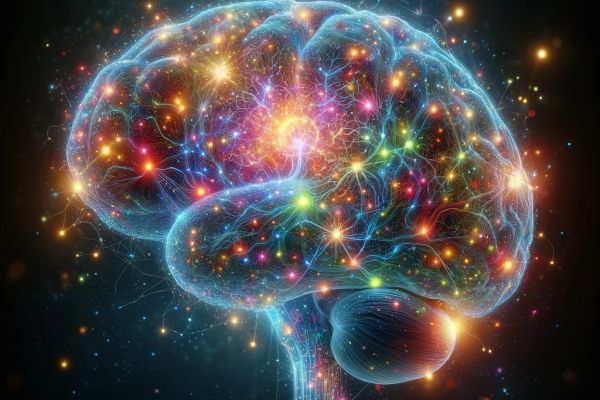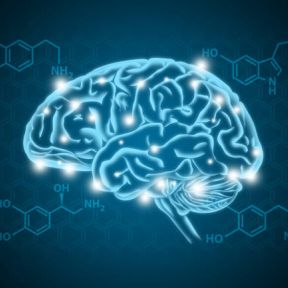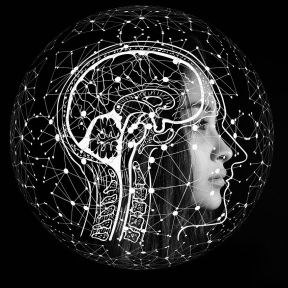Mental Health Treatment and the Brain
Psychiatric interventions using medication or brain stimulation aim to improve symptoms by inducing physical changes in how the brain works. But talk therapy, too, is believed to have effects on brain function (and thus on patterns of thinking, feeling, and behavior). The nature and the extent of change produced by these various forms of treatment are highly complex and continually under investigation.
On This Page
As a person learns and develops new behaviors, those changes are embodied in the brain’s neural networks. So there is every reason to believe that the improvements in people’s mood, thought patterns, and behavior that result from psychotherapy coincide with substantial changes in the function of the brain.
The alterations brought on by therapy are certain to be complex and to depend on the nature of the psychological dysfunction and other underlying individual differences, as well as the characteristics of the therapeutic intervention. But research using neuroimaging provides some concrete examples of how therapy may result in brain changes.
Scientists have explored whether cognitive behavioral therapy (CBT), a widely used treatment for anxiety disorders and depression, improves symptoms in part by altering the function of the amygdala (which is key for responses to perceived threat) and the prefrontal cortex, which inhibits the amygdala. Clinical neuroscience provides evidence to suggest this may be the case. Research has also observed neural changes that appear to correspond with symptom reduction in post-traumatic stress disorder, psychosis, and other conditions.
Mental and behavioral problems that are thought to be rooted in brain function are diagnosed and treated by clinical professionals from a number of different specialties. These specialties differ in their emphasis and the kinds of training involved. Three prominent fields with a focus on the links between the brain and behavior are neuropsychology, psychiatry, and neurology.
Neuropsychology
Clinical neuropsychologists are psychologists (with a Ph.D. or Psy.D. degree) who have specialized knowledge about the links between behavior and thinking and the nervous system. They apply this knowledge in assessing concerns about memory, reasoning, perception, attention, and other cognitive abilities. These concerns may be connected to brain injury or disease, or to conditions such as autism, ADHD, or a learning disorder. Neuropsychological evaluations commonly involve interviewing and standardized tests of cognitive abilities and skills. Neuropsychologists may make or confirm diagnoses, help to plan treatment, and provide feedback to other care providers.
Psychiatry and Neurology
Psychiatrists and neurologists are medical doctors (with a MD or DO degree). In addition to conducting their own assessments and making recommendations to patients and their loved ones, they can prescribe medication to help treat symptoms by altering the function of the brain. There are similarities between the two disciplines, but they differ in part based on the types of conditions they tend to deal with.
Psychiatrists typically treat mental health conditions involving problems with thinking, mood, and patterns of behavior, such as depression, anxiety, schizophrenia, and substance use disorders. They may provide psychotherapy in addition to prescribing medication.
Neurologists treat disorders of the nervous system (commonly those involving clear damage or degradation), such as stroke, Parkinson’s disease, Alzheimer’s disease, multiple sclerosis, and epilepsy.
There are multiple classes of drugs prescribed to treat psychiatric conditions, and the exact ways in which they work at the neurobiological level to alleviate symptoms are not always understood. Something that various psychiatric medications have in common, however, is that they are designed to influence the function of one or more neurotransmitter systems—either increasing or reducing a neurotransmitter’s effects in the brain.
- Antidepressants are used to treat clinical depression as well as multiple anxiety disorders and related conditions, such as obsessive-compulsive disorder. A major category of these medications is the selective serotonin reuptake inhibitors (SSRIs). While the reasons for their therapeutic effects are still being explored, SSRIs are designed to increase the availability of serotonin molecules in the synapses between neurons. They do this by blocking the retrieval (or reuptake) of these molecules. Other forms of antidepressants target the reuptake of the neurotransmitters dopamine or norepinephrine (or both norepinephrine and serotonin). Scientists continue to explore changes caused by these drugs—in the production of brain-derived neurotrophic factor (BDNF), for example—that may help explain their therapeutic effects.
- Anxiolytics are another type of medication (in addition to antidepressants) that are used to treat anxiety disorders. The most common of these are benzodiazepines, which increase the activity at receptors for the neurotransmitter GABA. (Taking these drugs also causes tolerance of their effects over time, and in some cases may lead to dependence.) Other anxiolytic medications include beta blockers, which inhibit the effects of norepinephrine on beta-adrenergic receptors, and buspirone, which acts on the serotonin, noradrenaline, and dopamine systems.
- Antipsychotics are primarily used to treat psychosis, including in schizophrenia and related disorders as well as in bipolar disorder. They are believed to reduce symptoms of psychosis, such as hallucinations and delusions, by blocking receptors for the neurotransmitter dopamine in certain parts of the brain. Categories of antipsychotics called “typical” and “atypical” differ based on how extensively they block dopamine receptors in the brain. Atypical antipsychotics are more targeted to the mesolimbic dopamine pathway and appear to be less likely than typical antipsychotics to have certain side effects, such as tardive dyskinesia (which involves uncontrolled muscle movements).
- Mood stabilizers are used to treat bipolar disorder and mood disturbances in some other disorders. One major mood stabilizer, lithium, is effective for treating bipolar disorder, though the mechanisms involved are not fully understood. It appears to have a variety of effects in the brain that may help explain its therapeutic efficacy, including preserving or enlarging the volume of structures involved in emotion regulation, altering the function of neurotransmitters such as glutamate, dopamine, and GABA, and increasing brain-derived neurotrophic factor (BDNF) and other protective proteins.
- Stimulants are commonly prescribed to treat attention-deficit hyperactivity disorder (ADHD) and are sometimes used to promote wakefulness in other conditions, such as narcolepsy. Several major stimulant medications, such as amphetamine and methylphenidate, increase the activity of dopamine in the synapses between neurons—including in the brain’s mesolimbic pathway, which is involved in processing reward.
Brain stimulation methods involve the use of electricity to increase or dampen the function of certain areas of the brain with the aim of improving symptoms of mental disorders. Some methods involve the insertion of electrical devices into the body, while others use external stimulation.
Repetitive transcranial magnetic stimulation (rTMS) is a prominent example of brain stimulation that does not require surgery. Approved by the U.S. Food and Drug Administration for use in patients with depression that is resistant to antidepressant treatment, rTMS uses magnetic pulses to alter the electrical activity in specific areas of the brain—such as by boosting activity in part of the prefrontal cortex in those with depression. Treatment with rTMS involves a magnetic coil positioned over the scalp and requires sessions of up to an hour, typically daily for a matter of weeks (though briefer, modified versions of TMS have been explored as well). TMS has also been investigated as a treatment for anxiety, psychosis, and other conditions.
Electroconvulsive therapy (ECT) is a less targeted method of brain stimulation that has been used in cases of severe and treatment-resistant mental disorders, including depression, schizophrenia, and bipolar disorder. In ECT, anesthesia is provided, and electrodes on a patient’s head send an electrical current to the brain that induces a brief seizure.
In some forms of brain stimulation, electrodes are surgically implanted. This is the case in deep brain stimulation (DBS), in which devices inserted in a person’s chest deliver impulses to electrodes implanted in brain regions that have been implicated in the conditions being treated. The procedure has been studied for use in cases of treatment-resistant depression and obsessive-compulsive disorder. Similarly, vagus nerve stimulation (VNS), used for treatment-resistant depression under some circumstances, involves a surgically implanted device that sends impulses through the left vagus nerve (which runs from the brain to the abdomen).
Mental disorders are generally diagnosed based on reported or observed symptoms (such as maladaptive thought patterns and behaviors), not on brain scans. There are a number of obstacles to using brain scans to diagnose mental health conditions such as depression, obsessive-compulsive disorder, or generalized anxiety disorder. Importantly, there is no clear biological marker in the brain confirming that someone has a particular psychiatric disorder. There may be detectable differences in brain structure and function, on average, between people with a certain kind of mental illness and those without it; but there is also plenty of variation in the brains of people with the same diagnosis, as well as similarity between people who have different diagnoses.
Some researchers are working to develop tools, including machine learning algorithms, that can distinguish which individuals have particular conditions based on brain scans. While studies have indicated that such methods can identify the brains of participants with conditions such as schizophrenia or bipolar disorder with greater-than-chance accuracy, they are still being developed and tested and are not widely used for making diagnoses in clinical settings.














